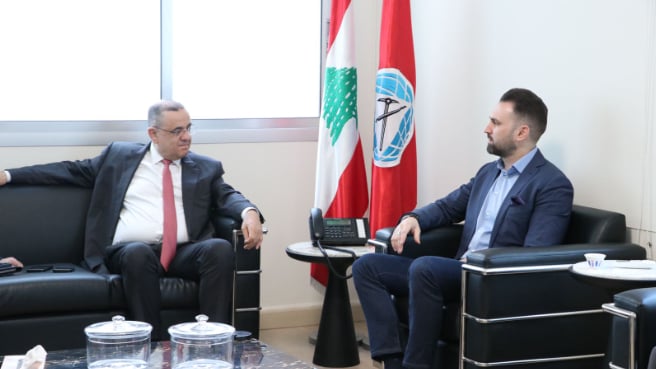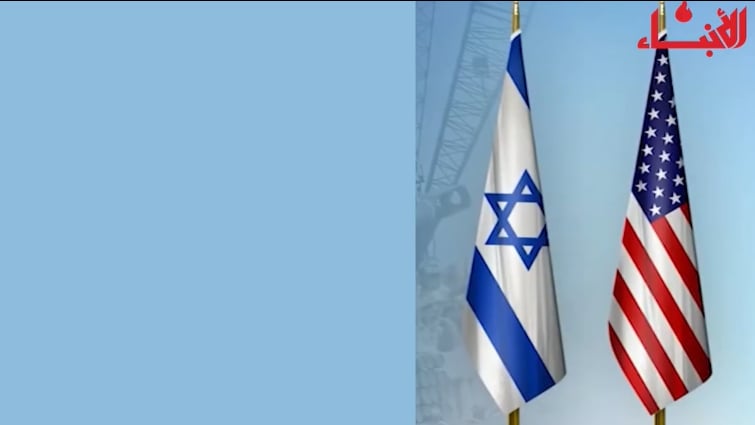By Joby Warrick
He was known to the CIA's clandestine service as "the chemist," and few at headquarters would ever know his real name. A professor and a gifted scientist, he had been perfectly positioned for spy work, with a job that entitled him to privileges not accorded to ordinary Syrians, including a broad latitude to travel and to meet with foreigners in the crowded souks and smoke-filled cafes of the old city.
He drew little attention to himself as he moved about, a small, clean-shaven man with owlish glasses and gray-flecked hair, in a modest suit that might have belonged to a salesman or bureaucrat. Only when he spoke English was there a hint of something exotic: a distinct American accent. It was the only detectable residue from a youth spent partly in the United States, where he attended school, ate cheeseburgers, played sports, and even joined the Boy Scouts, all before returning to his homeland to become an expert in making chemicals designed to kill human beings.
He was proud of his professional work — so proud, in fact, that analysts suspected at times that his spying was motivated less by hatred of the regime or greed than by a compulsion to boast. His first attempt at establishing contact had occurred at a scientific conference in Europe, where he had asked a friend to pass along a note to an American at the nearest U.S. Embassy. Many months passed before the CIA followed through, yet he seemed unsurprised when a stranger approached him after one of his evening lectures at Damascus University.
“I’ve been expecting you,” he told the visitor, a 20-something CIA case officer who would soon be entrusted with an extraordinary military secret. “Call me Ayman.” The author agreed to withhold the spy’s surname because of the risk of retaliation against surviving family members.
When civil war broke out in Syria in 2011, CIA officials were seized with the fear that Damascus might lose control of its vast stores of sarin and other deadly nerve agents. As revealed in this excerpt from the new book “Red Line,” those fears were bolstered by more than 14 years of secret reports fed to the agency by one of Syria’s top military scientists. The CIA knew much of what materials Damascus possessed and where they were hidden — thanks mostly to one agent. The previously untold story of this man, who offered his services to the U.S., is based on interviews with three former U.S. intelligence officials familiar with the case as well as a Syrian scientist and defector who was a contemporary of Ayman.
The chemist seemed to take an instant liking to the American, and the two spent long hours in conversation as each quietly sized up the other. One day the scientist invited the young officer to his home in downtown Damascus, a small apartment he shared with two different women he had wed legally under Syria’s permissive polygamy laws. He seemed compelled to justify his living arrangements, as another man might explain an extravagant impulse purchase: His first wife was an excellent cook, he said, but he had decided to marry a second, considerably younger woman — his secretary — out of a purely carnal attraction. Who could have foreseen such turmoil? The two women squabbled constantly, except for the times when they united to direct their scorn at him. He had wanted a spicier love life and ended up with a case of perpetual heartburn. “I don’t recommend it,” the scientist counseled his guest.
The two wives politely served coffee as Ayman spoke of his high school and college years in the United States, and of the kindly American couple who took care of him when he arrived as a wide-eyed teenager with a suitcase and an academic scholarship. He showed off his stereo and musical collection, playing a few tracks of moody electronica from his favorite artist, French New Age composer Jean-Michel Jarre. And then, after the women left the room, the Syrian turned to the subject that he had waited anxiously to talk about. That evening, in the first of multiple meetings between the two men, he told his incredible story as the case officer sat transfixed, the sludgy coffee turning cold in his cup.
A python's embrace
On a hill overlooking the capital stood a complex of heavily guarded laboratories where Syria’s military establishment carried out experiments on new weapons. The foreign intelligence services were well familiar with the Scientific Studies and Research Center — commonly known as CERS, its French initials — as the place that supplied the engineering muscle behind Syria’s modest line of missiles designed to deliver conventional warheads to Tel Aviv or Jerusalem. But hidden within CERS was a secret unit called Institute 3000, and Ayman was one of its leaders and senior researchers. Its primary work was making a line of exceedingly lethal poisons to be placed inside those warheads. The scientists called their project al-Shakush, or, in English, “The Hammer.”
.jpg)
In part because of his own contributions, Institute 3000 had made remarkable strides, the chemist said. Syria’s chemical weapons program had started simply, with mustard gas, famously used in the trenches of Europe during the epic battles of World War I. But now it had moved to a far deadlier class of poisons called nerve agents, which Institute 3000 was beginning to produce in an underground factory just outside the capital. These were nightmare weapons, and the Syrians had created multiple variations so they could adjust to changing battlefield conditions. One of them, sarin, had been around for half a century and still was regarded as one of the deadliest substances ever made. Another one, called VX, was even deadlier than sarin, and longer lasting. It left behind an invisible oily coating that could kill for days, since the slightest brush against bare skin is nearly always fatal.
The case officer listened thoughtfully. The CIA had long known of Syria’s interest in making chemical weapons, but the extent of Damascus’s progress was unclear. Twice in public statements in the late 1980s, Syrian officials had hinted about a new “deterrent,” a made-in-Syria answer to Israel’s nuclear bombs. Was this what they meant?
If the chemist felt the slightest ambivalence about his work, he gave no sign of it. The United States and the Soviet Union had developed entire weapons systems based on such poisons in the 1950s and 1960s. Why shouldn’t Syria have the same right to deter aggression by its nuclear-armed neighbor? Whenever Israel came up in conversation, it was clear that subject was intensely personal. Twice in the chemist’s lifetime, Syria had endured the humiliation of having its southern border overrun by Israeli tanks: in 1967, when the Jewish state captured the Golan Heights; and again during the 1973 Yom Kippur War, when the Israeli army chased retreating Syrian battalions to within 25 miles of Damascus.
From now on, things would be different, the scientist said. Future invaders would find themselves engulfed in a fog of suffocating gases that would leave their bodies strewn across the dusty valleys of Syria’s southwestern frontier. Those who survived would be among the first to see the contrails of Syrian missiles heading south to deliver the same fate to distant Israeli cities.
The chemist eyed his guest with a look that conveyed both satisfaction and deadly earnestness.
“You should warn the Jews,” he said.
The chemist became particularly animated whenever the conversation turned to sarin. Of all the weapons under development within Institute 3000, the chemist was clearly proudest of his sarin work. Sarin is a perfect killer, as the Nazis learned when they inadvertently discovered the compound while testing new kinds of pesticides in the 1930s. Military-grade sarin is 26 times deadlier than cyanide, and it works by attacking the nervous system, quickly paralyzing the muscles used in breathing, so that the victim dies an agonizing death of asphyxiation. Just a whiff of vapor and the poison would grasp a man with the deadly intensity of a python’s embrace, squeezing him until he lacked even the breath with which to utter a final prayer.
A Christmas present for the CIA
Making pure sarin — the kind that the Soviets and Americans manufactured by the ton during the Cold War — is hard for a small country with a modest industrial base. And lesser grades of the poison tended to deteriorate with time. So the chemist devised a clever work-around. His laboratories would make a form of binary sarin: two stable liquids that could be stored separately and blended only at the last minute. One of the two liquids was ordinary isopropyl alcohol. The other, a toxic brew called DF, contained all the other ingredients, including an exclusive additive — which Ayman helped discover — that helped ensure that the sarin lost none of its potency during the short interval between the mixing and the arrival at the target. Over the decades, perhaps a dozen countries had manufactured sarin for use as a weapon. But no one had developed a formula exactly like this one.
After the meetings, the case officer relayed the gist of the conversations via secret cable to CIA headquarters in Langley, Va., where analysts pondered the chemist’s assertions with a mixture of astonishment and concern. The information was extraordinarily detailed and credible — indeed, almost too good. The agency’s new spy was now being paid for his information, in the form of cash transfers to a foreign bank account, but he was asking the Americans to take him at his word. Where was the evidence?
The chemist appeared to anticipate the question. One late December day, he sent a cryptic signal to the case officer requesting a meeting. He had something to give the young American, but it had to be in private — not at his house, and not in a cafe or another public place where the exchange might be seen.
The arrangements were set. On the agreed evening, the spy and the case officer sat together in the front seat of a Peugeot parked on a quiet Damascus street a few blocks from the U.S. Embassy. After a brief exchange of pleasantries, the scientist produced a small package.
“It’s nearly Christmas. You’re a Christian,” the chemist said, handing over the bundle. “Here’s a Christmas present.” A few minutes later, the American was left alone to ponder what was inside the parcel’s plain wrapping.
The younger man had an inkling, so, as a precaution, the CIA arranged to send a pair of technical specialists to his Damascus apartment to help with the initial assessment. Donning respirators and protective suits, the specialists carefully removed the outer packaging to reveal a small box.
Inside the box was a sealed plastic vial. And within it, visible through the plastic casing, was a clear liquid. The chemist had boasted of his prowess in making exceedingly effective nerve agents. Now he had given the Americans a sample.
Several days passed before the liquid could be fully analyzed. The vial was first repackaged and placed in a shatterproof container, then stuffed inside a diplomatic pouch to be flown out of the country. Once in the United States, it was rushed to a military laboratory, where scientists in hazmat suits gingerly opened the vial for a first look at what was inside.
The results of the tests, when finally known, caused a sensation at CIA outposts on both sides of the Atlantic. In a bare-bones lab, in a backward, autocratic state that had been shunned and blacklisted by the industrial powers of the West, the Syrian chemist had produced a weapon of astonishing quality and elegant simplicity — a deadly chemical masterpiece.
A tinge of panic
Years passed, and the hilltop laboratory complex steadily grew. By the early 2000s, the network of laboratories and production centers gradually blossomed into a mature manufacturing complex that encompassed some 40 buildings and storage bunkers at two dozen secret locations scattered across the country, from the capital to the northern city of Aleppo. The lab’s researchers still experimented with new products, but by the early 2000s the program had achieved a kind of equilibrium: a steady reserve of 1,300 to 1,500 tons of binary sarin, mustard gas, and VX. With Syria at peace, there was no need to make more.
.jpg)
The meetings in the alleys and cafes also went on, for 14 years, though the faces on the American side changed as new handlers came and went. Over time new methods were devised for communicating, so that Ayman could transmit messages to the CIA simply by passing the U.S. Embassy building. The cash transfers continued as well, and the spy became a wealthy man, with a bank account grown fat with American dollars as well as dinars he received as kickbacks from vendors. The sound system and Western music collection grew larger, and Ayman, approaching 50 now and gray-haired, moved his querulous wives into separate, lavishly appointed households. He was on top of the world professionally: respected by peers and admired by younger scientists. He commanded a large staff and a generous budget, and he led a highly successful military program that was prized by Syria’s leaders, including the president himself.
But something, somewhere, went wrong. The chemist could see it in the faces of the security men who arrived at CERS unannounced one morning in late 2001, looking to speak to him. Could the scientist accompany them to their office for a private meeting?
Ayman felt a tinge of panic. Did these men suspect something? But how?
The interrogation began at the headquarters of Syria’s Mukhabarat intelligence service, where a high-ranking officer — Assef Shawkat, the deputy director of military intelligence and the president’s own brother-in-law — laid out his cards at once.
“You have been betrayed,” Ayman was told.
Shawkat proceeded to explain to the frightened scientist that the government knew all about his secret activities. It would be far better for you, Shawkat said, if you confessed and asked for leniency on account of your years of service to the Republic.
So Ayman confessed — to everything. He told his interrogators about his many years of contact with the CIA. He talked about the meetings with his handlers, the secrets he had passed, and the large sum of money he had amassed in an offshore bank. No one else had been aware of his spying, he said; not his co-workers, or his business associates, or even his wives. He had done it all by himself.
Shawkat and the other security men listened, confused at first, and then fascinated. The intelligence chief had decided to question the scientist after learning of a bribery scheme in which Ayman, in his greed, had demanded payoffs from foreign companies in return for contracts to sell supplies to his institute. That was the entire reason for his arrest.
Of the far more consequential betrayal — the selling of state secrets to the CIA — the intelligence service had known nothing at all.
At that moment, throughout the Middle East, a new era was dawning, and old battles were being refought with new ferocity. Syria’s new president, Bashar al-Assad, had just ended his flirtation with free expression, a brief flowering of dissent that became known as the Damascus Spring following the death of Assad’s father in 2000. Eerily foreshadowing the Arab Spring revolt that would occur a decade later and lead to civil war, Assad firmly cast his lot with the security forces who had kept his father in power for nearly 30 years, giving his police free rein to arrest, torture, and murder until the last tendrils of the fledgling movement had been ripped from the earth.
As other Arab Spring revolts failed, Tunisia showed how democracy might prevail. But its people say they want more.
From hard men such as these, there would be no leniency for an accomplished scientist and poison-maker who had betrayed his own country. Ayman was found guilty of treason, a verdict rendered in a closed proceeding that was kept out of the public eye but described in detail, as a warning to the other scientists at CERS.
Prisoners convicted of capital offenses in Syria are usually executed by hanging, but Ayman, who had been a national hero as well as a traitor, was given special treatment. His two wives and their children were permitted to leave the country to start new lives abroad. Then, on the gray, blustery morning of April 7, 2002, he was awakened in his cell at the country’s infamous Adra Prison and escorted into a courtyard where a firing squad stood waiting. He was blindfolded, tied to a post, and shot to death.
As he died, teams of workers in protective suits were mixing a new batch of the chemist’s binary sarin in an underground factory in the Adra hills, less than five miles from the prison. In a locked chamber beyond the production hall, the finished product sat in gleaming 2,000-liter tanks, arrayed in row after tidy row, waiting for the unthinkable day when they would be put to use.





